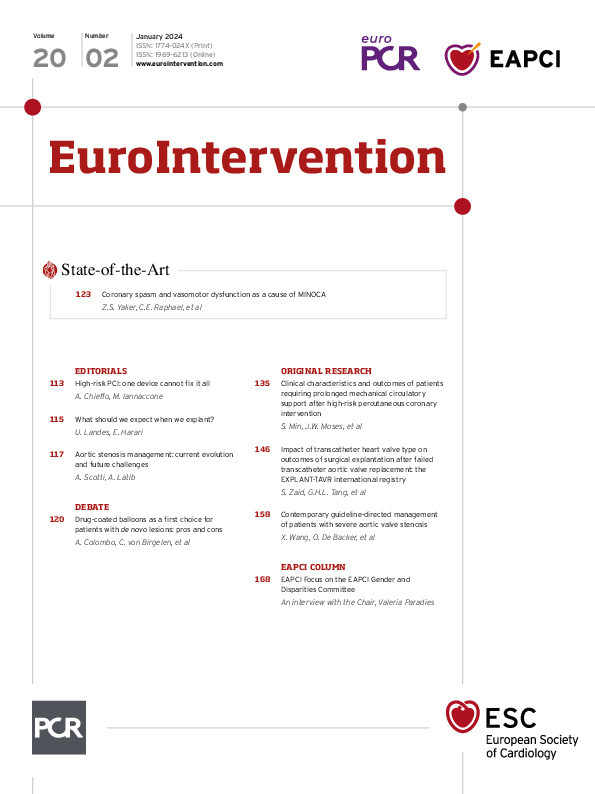As transcatheter aortic valve replacement (TAVR) is increasingly used in patients with longer life expectancies, we face more obstacles that can impact long-term valve function. Among such complications are endocarditis, structural valve degeneration, thrombosis and paravalvular leak. As TAVR patients tend to be a high-risk group, a non-surgical treatment is often sought. Up until now, the rate of redo-TAVR procedures has been 0.33% (of TAVR patients) with a 30-day mortality rate of 1.4%1. However, in some patients, such as those with TAVR failure due to infectious endocarditis, redo-TAVR will likely produce a dismal result. Therefore, it is of great importance to develop more information on surgical TAVR explantation, as it is likely to become a key treatment in the future. An analysis of the Society of Thoracic Surgeons Adult Cardiac Surgery Database (STS ACSD) reported on 123 patients in which surgical TAVR explantation was performed (representing 0.3% of the 40,000 TAVR procedures performed in that period). The 30-day mortality rate was 17.1%2, which was higher than the predicted mortality of included patients (according to the STS score). A meta-analysis showed infective endocarditis to be the most frequent indication for TAVR explant (37.6%), followed by structural valve deterioration (27.7%). Balloon-expandable valves (BEV) comprised 60% of the explanted valves, root repair was performed in 29% of patients, and the mortality rate at 30 days was 16.7%3.
In this issue of EuroIntervention, Zaid et al publish data from the EXPLANT-TAVR registry4. The median time from the index TAVR to explantation was 13.3 months, and no difference was observed between patients with BEV and self-expanding valves (SEV). With BEV (vs SEV), more patients had urgent and emergent procedures, and the indication to explant was more frequently endocarditis (55.4% vs 36.0%) and less frequently paravalvular leak (PVL). The rate of concomitant procedures (e.g., coronary artery bypass graft, mitral valve repair, target vessel revascularisation) was 57.8%; this was similar between the groups. No differences were found in mortality rates (in-hospital 13.0%; 30 days 16.0%; 3 years 32.8%) for BEV compared to SEV. Aortic root replacement was more common in SEV explant (15.3% vs 7.4%), as was the rate of tricuspid valve interventions, yet the cardiopulmonary bypass time or cross-clamp time remained similar between BEV and SEV patients. In both groups, a concomitant mitral valve surgery was found to be associated with double the mortality risk.
Fukuhara et al used the STS database to compare BEV and SEV TAVR explantation (68% of the explanted devices were BEV, 32% were SEV). The baseline New York Heart Association (NYHA) Class was III-IV in 51% of the patients, and 8% were on inotropes. The leading explantation indication among SEV patients was TAVR-related failure (30%), followed by endocarditis (21%), stenosis (18%), and aortic insufficiency including PVL (16%)5. With BEV, endocarditis was the leading indication for explantation (24%)5. SEV explantation was associated with more ascending aorta interventions (22% vs 9%). Additional interventions other than explantation were common in both groups (63%), with tricuspid procedures more common with SEV. There were no significant differences in 30-day mortality, stroke, length of hospital stay or readmissions.
Both studies raise several questions and concerns. BEVs were frequently associated with a higher endocarditis rate, which may be an accidental finding or, theoretically, might be explained by differences in device characteristics and haemodynamic profiles, with higher residual transvalvular gradients with BEV.
Mitral valve intervention doubled the mortality risk in both SEV and BEV explants, which brings into question whether the bar for surgical mitral intervention should be raised in these procedures. This is a complex matter, since we know that mitral regurgitation can improve after aortic valve replacement6. In case of a failed TAVR in conjunction with severe mitral disease, it may be beneficial to examine the mitral valve with transoesophageal echocardiogram (TOE) and discuss within the Heart Team whether surgical correction of the mitral valve pathology is mandatory or whether other treatment modalities, such as transcatheter repair, can be applied. The publication of Zaid et al adds to our understanding of TAVR valve explantation. It is encouraging to note the similar mortality rates with SEV explantation despite a higher rate of root replacement, and it is hypothesis-generating for improving outcome through proper valve selection and implantation methodology. Most importantly, the lack of major outcome differences between SEV and BEV explantation allows us to keep our focus on the index TAVR outcome when choosing the index TAVR valve.
Conflict of interest statement
U. Landes has received consultant fees from Edwards Lifesciences. E. Harari has no conflicts of interest to declare.

